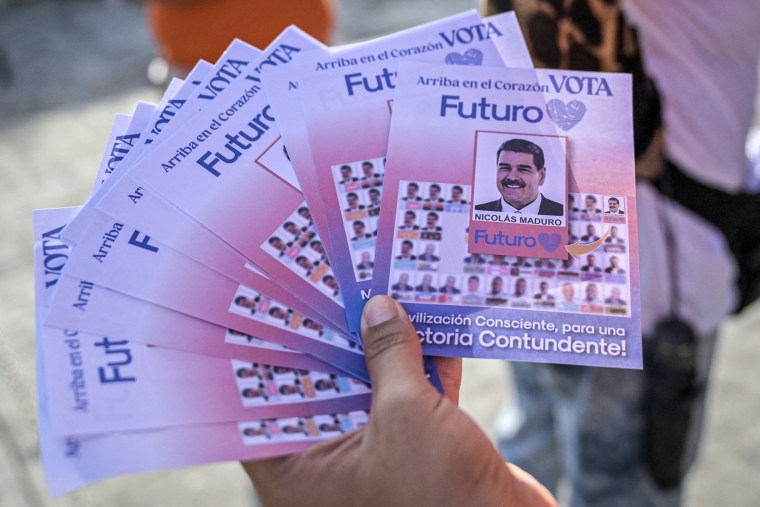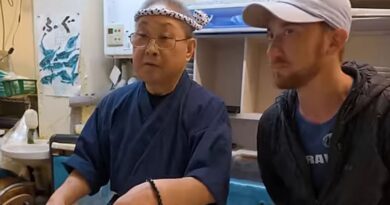Why Nicolás Maduro appears 13 times on the ballot for Venezuela’s presidential election
Seasoned Venezuelan voters are also used to seeing many candidates on the touchscreens used in the South American country’s elections.
But for some, that many photos could be confusing.
“I get dizzy when I see Maduro so many times on that card, but I know that the danger is in the candidates who do not represent us,” said Sonia Guevara, a 38-year-old office worker, referring to some opposition candidates who are seen close to the government.
Such an example is the case of Luis Martínez, the candidate from “Acción Democrática” — Democratic Action party or AD for short — a traditional opposition group whose leadership was suspended months ago by the Maduro-loyal top court.
Martínez decided not to support González, the contender of the opposition’s Unitary Platform coalition.
“This is confusing. I have had to explain to my mother many times that the AD on the card is not the AD she always votes for,” Guevara said. “My mom is 71 years old, and I tell her not to vote for AD this time.”
González is featured three times on the ballot. Martínez, who is considered a government ally, shows up six times.
The number of eligible voters ahead of this month’s election is estimated to be around 17 million. Another 4 million Venezuelans living abroad are registered to vote, but only about 69,000 met the government-set requirements to cast ballots overseas. Costly and time-consuming government prerequisites to register, lack of information and a mandatory proof of legal residency in a host country kept many migrants from signing up to vote.

Francisco Maldonado, a 50-year-old merchant in Caracas, is ready to vote.
“At this point, I think we all know who we are going to vote for, but more than ever we have to be careful, the same care we have when we use an ATM,” Maldonado said. “We cannot make a mistake when marking.”
Venezuela’s exact population is unclear as the last census in the South American country was conducted in 2011. At the time, it concluded there were 27.2 million people — but since the country’s political, economic and social crisis over the last decade, more than 7.7 million have left.
Laura Dib, Venezuela Program Director at WOLA, a Washington-based nongovernmental organization focused on human rights in the Americas, said that even if it’s common that a candidate’s face is repeated on the ballot, being 13 times on it, makes Maduro “visually the easiest to identify.”
Considering that the opposition faction supporting González has no access to official media in Venezuela, Dib said “the opposition has a harder time educating voters on how to vote.”
She also noted there are other confusing matters — some parties are using the same colors on the ballot as those supporting Maduro. And one candidate from an opposition faction was allowed to use the same color as the main opposition candidate group.
That, Dib said, “also creates confusion and it violates the rules of the CNE,” she said, referring to the acronym in Spanish for the national electoral council.
Additionally, the electoral law allows parties to substitute candidates 10 days before election day, although that change may not be reflected on the ballots, which have already been programmed on the electronic machines or printed for the vote abroad.
If people vote for a candidate who has been replaced, Dib said, “those votes casted will be null.”





